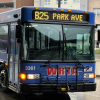In recent years, Boston’s skyline has been equal parts construction cranes and skyscrapers.
City officials say Boston is going through the biggest development boom in its history. New buildings are rising in the Seaport, South Boston, the South End — and now, Allston-Brighton.
Some say Boston is squandering a rare opportunity to build a neighborhood that’s affordable. Others say this development is a sign of the city’s success.
Take the transformation of Lower Allston at Western Avenue and North Harvard Street.
"Five years ago, you wouldn't necessarily see much pedestrian traffic here,” said real estate agent and investor Todd Mack of Lower Allston. “There was a Dunkin Donuts, a 7-Eleven and a gas station."
Now, there’s a Trader Joes, several fancy restaurants and new apartments where studios rent for over $2,000 a month. The change from cinder blocks to Starbucks has been rapid.
“It's great for all the residents here in Boston,” Mack said. “I am excited about it.”
While many of Mack’s neighbors worry about what all the development will mean for the affordability of Allston-Brighton, Mack is not worried.
"We’re a first-class city. You really have to compare us to places like Los Angeles and San Francisco and Washington, D.C. and New York City," he said. "When you look at affordability in Boston, we are doing a great job. I know the headlines don't always say that."
Read more: The Big Squeeze: Why Does It Cost So Much To Live In Massachusetts?
Joanne D'Alcomo, co-founder of the Brighton Allston Community Coalition (BACC), disagrees.
"I'm not sure why City Hall hasn't been listening, but we're simply not going to let development and developers roll over us," D'Alcomo said.
The BACC, formed a year ago, is a group of hundreds of neighbors who say they support development but are concerned about housing affordability in their community.
“The developers are dying to build here. They are banging down our doors. They are trying to gobble up land,” D’Alcomo said. “So let’s use that in a transformative way to make livable areas, to make it work.”
D'Alcomo thinks the city has incredible power to force developers to create a vibrant community rather than generic buildings. However, she said, they’re not using that power.
Instead, she pointed to the recent construction of small, expensive apartments that she says are not suitable for families who might be investing in the area long-term.
But Sheila Dillon, Boston's chief of housing and director of neighborhood development, said the city has a broader strategy.
“Some of these people that are living doubled up want to live alone, so we would like to see additional small units to free up some of that older housing stock for family units,” Dillon said.
Dillon said the city of Boston is working hard to ensure there’s as much affordable housing as possible, especially for people in lower income brackets.
“We don’t want to see anyone leave Boston that wants to live here,” said Dillon. “About 20 percent of our housing stock is affordable, and we want to grow that percentage.”
Read more: What Exactly Is Affordable Housing?
Gerald Autler, senior project manager/planner at the Boston Planning and Development Agency, said the city’s broader vision is working. He said there’s already a new level of vibrancy in the Allston-Brighton neighborhood.
“The sky has not fallen. Yes, there are concerns about affordability and transportation, so on and so forth. But some of the really dire consequences that people have worried about have not happened,” Autler said. “And, in fact, there has been a lot of positive transformation.”
Many fights over neighborhood development pit NIMBY residents opposed to new construction against developers. In Allston-Brighton, however, many residents, investors and the city want development. The question is: Exactly what kind of development, and will any of the old community be left at the other end of the transformation?





